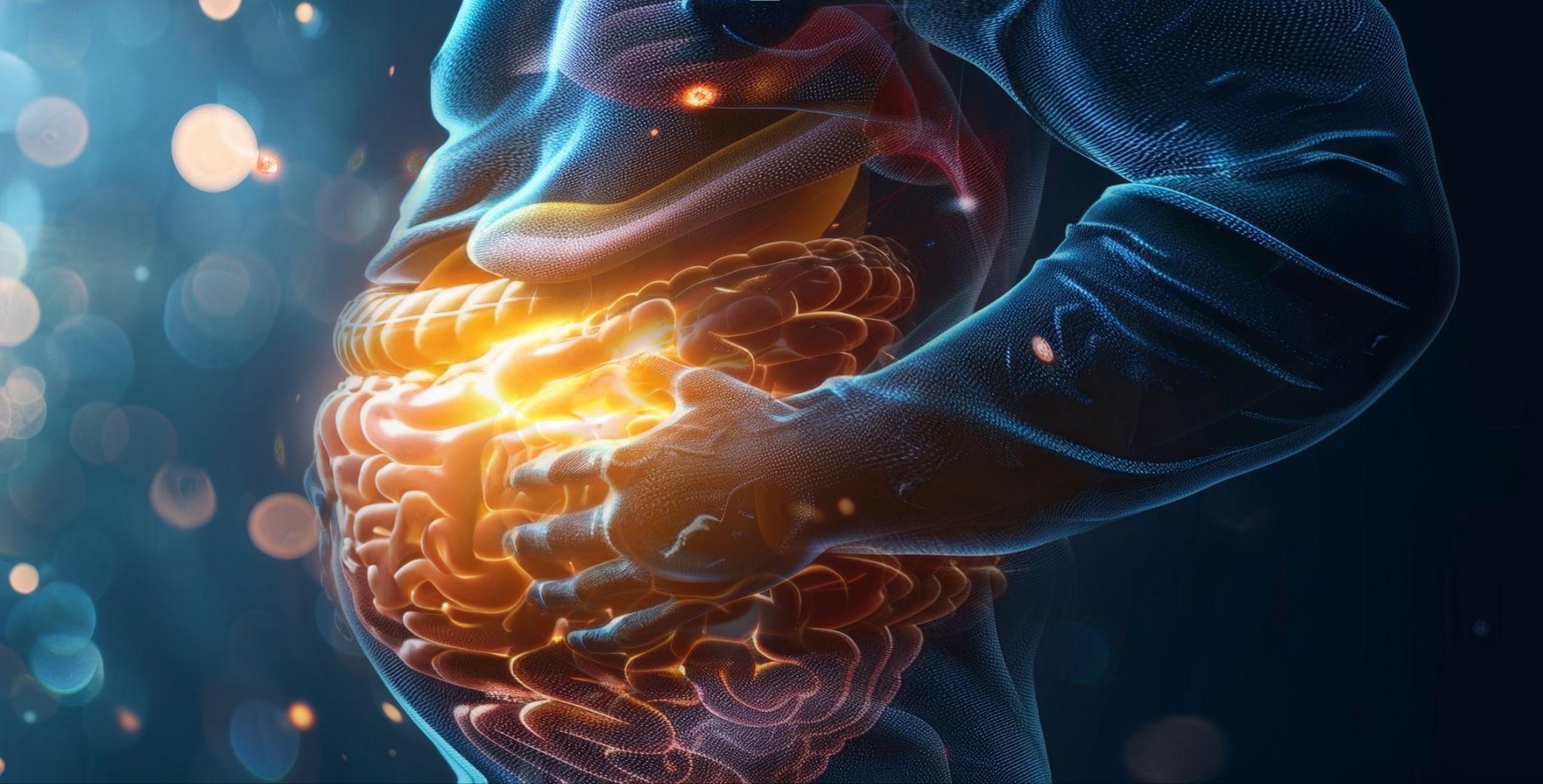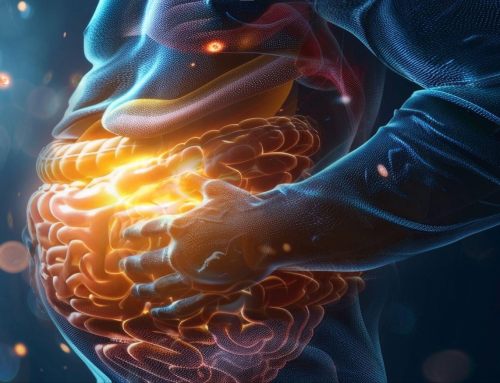Malnutrition in Obesity – Poised to Benefit from Personalized Lifestyle Medicine
It seems contradictory to observe obesity and malnutrition in the same human. However, it’s becoming a more recognized condition due to advances in modern testing. One would think that the number of calories consumed would provide the nutrients needed by the body to be healthy, even if some of the calories were not from healthy foods. However, there is an ever-expanding body of evidence that quantity does not equal quality, and many people living with obesity do indeed have significant nutrient deficiencies, even malnutrition.
How can these two seemingly contradictory states occupy the same human? Here, we examine some of the potential contributors to malnourished obesity, what personalized assessments might be attempted, and what personalized lifestyle medicine (PLM) might offer for this serious health condition.
Caveat
First, it must be acknowledged that contributing factors to obesity may also be the results of being obese. It is very difficult to tease out cause and effect, as the outputs of obesity may be the inputs that contribute to further obesity in a most unwelcome feedback loop. However, a practitioner must start somewhere, so testing the patient and addressing unusual results can throw the proverbial wrench in the feedback loop and hopefully wrest the condition from building upon itself.
The Challenge
Obesity, characterized by the CDC as having an excessive amount of weight for one’s height, is quite prevalent, estimated to be at 41.9% of the U.S. population in 2017 (1). No matter the exact cause of the individual’s obesity, there are many possible health consequences (2), such as type 2 diabetes, high blood pressure, high cholesterol, inflammation, hormone imbalances, and breathing issues. The negative impact on the quality of life of the individual is high and cascades to impact the economy due to missing work or being unable to perform work to a previous standard.
The statistics for being nutrient deficient are harder to estimate. While being slightly deficient in one or more nutrients may not affect how an individual looks or feels, multiple nutrient deficiencies can contribute to malnutrition, where the body does not get the nourishing substances required to maintain healthy tissues, organs, organ systems, and the numerous homeostatic mechanisms in the body. If any or all of these things get disrupted, it can cause a continuous cascade of negative events in the body. So, addressing and arresting malnutrition in obesity can have profound health benefits.
There’s a conundrum, though, as many health practitioners don’t see an overweight patient and automatically suspect malnourishment. Most practitioners know corpulence doesn’t mean adequate nutrition has been achieved, yet the tendency is to equate malnutrition with low body weight, not being overweight. Lacking deep training in nutrition, some health practitioners may encourage an overweight patient to “lose weight” but fail to test for specific nutrient deficiencies or even direct the patient to a nourishing diet.
Studies on pre-operative bariatric patients are a good place to look for data on the obese, and studies have shown nutritional deficiencies. In one pre-operative bariatric study, the most common nutrient deficiencies were vitamin D3 (76%) and vitamin B12 (16%) alongside a variety of low Complete Blood Count (CBC) scores (iron status, red blood cell measurements, etc.). Oddly, this study also caught an overabundance of vitamin B6 in about 24% of their patients (3). In another pre-operative study, bariatric patients showed the same deficiencies as above, but in addition, about 28% showed a folate (B9) deficiency (4).
Potential Contributors
Potential contributors to nutrient deficiencies and malnutrition are the same for those who maintain a weight consistent with their height as those who do not. Though, the presence of high inflammation associated with obesity and the production of estrogen by excess adipose tissue (5) may exacerbate symptoms associated with some of the potential contributors. What follows is a partial list of potential contributors to nutrient deficiencies.
- Intestinal permeability (“leaky gut”) – Intestines are supposed to be permeable, as that is how nutrients get into the body from food that is eaten. However, the “tight junctions” which selectively allow broken-down food particles between gaps in the epithelial cell lining of the intestines into the bloodstream may become loosened (excessively permeable), allowing much larger food particles into the bloodstream. This can trigger the immune system to produce antibodies to the large food particles, which are seen as foreign objects. Many believe this is a triggering event for autoimmune conditions. Excessive intestinal permeability can also be associated with an increase of lipopolysaccharides (LPS), which are potential toxins released from the cell membranes of gram-negative bacteria that live in the gut, potentially contributing to a toxic state called endotoxemia.
- Malabsorption – Intestines are also supposed to act as a barrier to unneeded or unwanted substances that should notmake it into the interior of the body. However, needed nutrients must be allowed across the small intestine membrane into the bloodstream. For this type of absorption, broken-down food particles don’t go through the tight junctionsbetweenepithelial cells. Instead, they go through the epithelial cells themselves. In malabsorption, damaged villi on the surface of the cells or a disruption of the mucosal layer don’t allow the food particles to pass into the interior of the cell. Because they are not absorbed, these food particles continue through the digestive tract into the large intestine. In the lower bowel, these food particles can provide unique opportunities for opportunistic organisms, potentially contributing to dysbiosis (see description below). Malabsorption can not only prevent proper absorption of vitamins and minerals, but also the absorption of macronutrients (fats, proteins, and carbohydrates). Symptoms of malabsorption can be numerous but typically include diarrhea. Long-term, nutrient deficiencies due to malabsorption begin to create obvious symptoms.
- Dysbiosis – This condition is characterized by a reduction in the overall diversity of species of bacteria in the GI tract, a loss of beneficial bacterial species, and/or the overgrowth of a bacterial species that causes it to act as a pathogen (6). Imbalanced gut bacteria affect Short Chain Fatty Acid (SCFA) production, which is necessary for proper gut function and has a link to the brain through the gut-brain axis. Dysbiosis is also associated with increases in LPS, which can ultimately increase the pro-inflammatory cytokine IL-6 and Tumor Necrosis Factor Alpha (TNF-α).
- SIBO / SIFO – Small intestines are usually not a good environment for the overgrowth of bacteria or fungus (SIBO – Small Intestinal Bacterial Overgrowth, or SIFO – Small Intestinal Fungal Overgrowth). Food gets broken down and sterilized by stomach acids, then passed to the small intestine. Unfortunately, weak stomach acid, food poisoning, interference from medications, or other insults to the small intestine can cause favorable conditions for the overgrowth of bacteria or fungi. Once overgrown, these microbes can consume food particles that should instead be passing through the membrane of the small intestine into the bloodstream, creating byproducts such as methane or hydrogen. Symptoms can include belching, cramping, diarrhea, or constipation (or both).
- Diseases of the intestines (Celiac disease / Crohn’s / Ulcerative Colitis) – Many conditions affect the intestines to such a degree that nutrient absorption is greatly compromised. The three conditions listed here directly malign the intestinal lining.
- Inadequate micronutrient consumption, poor food quality, or “wrong” types of foods – Unfortunately, there is an abundance of food-like substances that have empty calories – while they provide calories, they don’t provide nourishment. Food science being what it is, many people are addicted to these food-like substances, which can be highly saturated with chemicals that light up the pleasure centers of the brain. Often these food-like substances are eaten to the exclusion of real food that does provide nourishment (nutrients) simply because they “taste better” than life-giving foods. We also know that diets high in saturated fats and refined carbohydrates have been shown to contribute to endotoxemia (7). Compounding these tragedies are depleted soils, which do not imbue fruits and vegetables with the number and potency of nutrients they once had when soils were rich. To add insult to injury (or injury to injury), non-organic crops are heavily sprayed with toxic chemicals that act as insecticides or pesticides, which can wreak havoc on intestinal linings.
- Hypochlorhydria – A surprising number of people have hypochlorhydria, which is weak or insufficient stomach acid. Unfortunately, the symptoms of low or weak stomach acid are identical to symptoms of overly strong or excessive stomach acid, for example, the symptoms of acid reflux, “upset stomach,” and belching. Many mistake this “acid reflux” as necessarily coming from an overly acidic stomach, whereas it may just be weak acid that has gotten in the wrong place because of a weak valve between the esophagus and stomach (8).
Individualized Assessment
Due to the uniqueness of body chemistry, genetics, and epigenetics, there is no settled battery of tests for determining malnutrition or nutrient deficiencies in the obese. However, determining nutrient status is key to assisting an overweight patient back to health, as corrected deficiencies may stop an ever-increasing list of negative symptoms that feed back upon each other. There are many ways to get data on nutrient deficiencies, and the skilled practitioner may select one or more of the following tests based on symptoms and health history. Multiple nutrient deficiencies may contribute to malnutrition, where the lack of nutrients negatively affects tissues, whole organs, or organ systems. Malnutrition may be inferred when multiple nutrient deficiencies exist, even if not directly seen in test results that examine organs (thyroid, liver, etc.).
Disclaimer: This is neither an exhaustive nor definitive list, but rather a quick, high overview of possible tests. Tests are always at the discretion of the practitioner and may include many tests not on this list. Also, reported lab ranges of what is considered “normal” may differ from functional medicine ranges (which are considered optimal for human health), so interpretation of scores by trained functional medicine practitioners is preferable.
Quantifying Obesity:
Different organizations have slightly different definitions of obesity, yet for practical purposes of quantifying this characteristic, the Body Mass Index (BMI) is almost always used for adults.
BMI – BMI is the weight in pounds of the patient divided by their height in feet. Charts of average BMI for adults are maintained on the CDC site (9), as well as caveats about cases in which the measurement does not hold up.
Visual assessment – Excess adipose tissue for the frame of the body can be assessed visually. If the shape of the person is “pear-shaped” due to the presence of excess adipose tissue at the waist, this can indicate a statistically increased risk for cardiovascular disease.
Body fat percentage – Newer scales can attempt to get a reading of the percentage of body fat versus muscle by measuring the impedance of an electrical signal through the bare feet of the patient touching the scale.
Quantifying Nutrient Deficiencies:
A variety of tests can be used to detect nutrient deficiencies (or the genetic potential for nutrient deficiencies) using serum, plasma, urine, or saliva.
CBC (Complete Blood Count)–
High scores in three measurements of red blood cells (RBCs): Mean Corpuscular Volume (MCV), Mean Corpuscular Hemoglobin (MCH), and Mean Corpuscular Hemoglobin Concentration (MCHC) can indicate a folate or B12 deficiency (10).
Low hematocrit (ratio of red blood cells to the total volume of blood) with a low RBC count can indicate anemia, a condition of low iron (11).
High Red Cell Distribution Width (RDW) can indicate folate, iron, or vitamin B12 deficiency. This score is a measurement of the width of a graph showing the different sizes of RBCs.
Other serum, RBC, or plasma tests – Some items can be measured directly: iron scores to test for anemia, folate (vitamin B9), vitamin B12, and vitamin D3. Low levels of vitamin D3 are associated with an increase in inflammation in obesity.
Note, measurements of vitamin B12 include both the active and inactive forms of B12. A person can be low in active B12 but still show scores within normal ranges. The methylmalonic acid (MMA) test with a high score can indicate a deficiency of active B12 (12). Active vitamin B12 is a required nutrient for a healthy gut lining.
The presence of amino acids (building blocks of proteins) can be measured through either plasma or urine. Trace and major minerals can be tested via blood (13).
Plasma and serum can be tested for Zonulin, a protein that acts upon tight junctions. The reliability of this test has been challenged numerous times, but it is still heavily used in the health field. To diminish issues with the zonulin test, it can be taken into consideration with other tests.
Indirect serum or plasma measures – Some markers can be indirect measures of potential nutrient deficiencies: high inflammation markers (hsCRP, myeloperoxidase, Lp-PLA2), high blood sugars (fasting glucose, hemoglobin A1c), high liver enzymes (ALT, AST, ALP, GGT), low hydration (eGFR), depressed or elevated thyroid hormones, elevated white blood cell count, and high homocysteine.
Urine tests – The organic acids test (OAT) yields measurements of malabsorption and dysbiosis markers and metabolites of toxins and neurotransmitter substances. The Intestinal Permeability test is a urine test that measures the amount of 2 different sizes of sugars that make it through the small intestine, shining a light on both malabsorption and excess intestinal permeability.
Genetic tests – There are numerous nutrigenomic tests available now. However, if the focus is on potential deficiencies, there are 3 areas that stand out. One is MTHFR genes, which have to do with folate (B9) and vitamin B12. MTHFR genetic mutations can lead to a lack of enzymes that help activate B12 and folate. Only the activated forms can be used by the body. Four potential alleles can be replaced by the “wrong” amino acid during a mutation. The more mutations there are, the less activated folate and B12 can be made from folate and cobalamin-containing foods. Vitamin D is the other area to look at. There are four interesting genes involved in the synthesis of vitamin D: CYP2R1, CYP27B1, CYP24A1, and VDR (14). Lastly, there are genetic tendencies to Celiac disease or gluten sensitivity which can be picked up by genetic tests.
Stool testing – Stool testing is the best test to reveal dysbiosis. Typically, multiple methods of analysis are used, including 16S polymerase chain reaction (PCR) genetic testing on RNA, mass spectrometry, microscopy, and culture. Not only will genetic testing on the microbes in the stool reveal genus and species of bacteria, but it will also calculate ratios of present bacteria and estimates of abundance, allowing a look at imbalances. Stool testing reveals not only bacteria but also yeasts and byproducts that reveal information about digestion and absorption (fecal fat, protein byproducts, pancreatic elastase) (15).
Testing for hypochlorhydria (weak stomach acid) – There are multiple tests for hypochlorhydria, though some of them are best performed by a GI doctor. The simplest (but most error-prone) test can be done at home by the patient using water and baking soda. Details about these tests can be found on the Cleveland Clinic site.
Personalized Lifestyle Treatment Plans
The protocols for addressing issues depend on what the testing shows for the patient. The practitioner should decide the order of implementation of protocols if there are multiple deficiencies. For example, if SIBO was due to hypochlorhydria (weak stomach acid), that would need to be addressed, so SIBO doesn’t return.
Potential personalized lifestyle medicine approaches:
Vitamin / mineral supplementation – For any deficiency revealed by testing, there is generally a nutritional supplement that can restore the patient to adequate levels. For those who test as having MTHFR genetic mutations, there are methylated versions of B12 and folate that are already activated, which removes a bottleneck for utilizing those nutrients. Supplementing a vitamin D3 deficiency to a state of sufficiency may help arrest a negative feedback loop and assist with addressing obesity.
Digestive enzymes / HCl – For those with hypochlorhydria, assistance from supplements containing pancreatic enzymes and betaine HCl (hydrochloric acid/stomach acid analog) can help break foods down into their smallest pieces, facilitating better absorption across the small intestine lining.
Intestinal permeability (“leaky gut”) protocol– This is typically a multi-step protocol that includes taking digestive enzymes, improving the integrity of the mucus layer of the intestines, and taking supplements that help close the tight junctions between epithelial cells. The diet can be altered to assist, with whole foods, gluten-free, alcohol-free, grain-free, and anti-inflammatory fare being the most healing.
Dysbiosis protocol – Often a multi-step protocol, correcting the balance of gut flora can usually be achieved with a combination of prebiotics, probiotics, herbal or prescription antibiotics, or antimicrobials. Diet may be altered, excluding alcohol, severely limiting sugars, and moving to a whole foods, preservative-free diet. Drinking non-chlorinated water can also be advantageous.
Prescription or herbal antibiotics – Addressing SIBO and/or SIFO requires a course of prescription antibiotics or of herbal antibiotics. A low-sugar, alcohol-free diet that decreases inflammation and provides little for the overgrown microorganisms to eat may be advised before, during, or after the antibiotic treatments.
Diet – A gluten-free diet may be advised for those with Celiac Disease or gluten sensitivity, who have a genetic tendency to incur damaged villi in their guts when exposed to gluten. An anti-inflammatory diet may be helpful to counter the ability of obesity to increase inflammation in the body. A modified Mediterranean diet (modified by reducing refined carbohydrates and eliminating gluten) can be extremely helpful in reducing symptoms.
Exercise – Burning off glucose in the bloodstream through exercise can ward off diabetes, which occurs at higher rates in the overweight and obese. Aerobic activity can increase the oxygenation of the blood, increase the clearing out of waste products from cells, and release endorphins (16). Remember that adipose tissue can form estrogen? Exercise can lower levels of estrogen as measured by urine tests (17). Doing this can arrest a feedback loop where estrogen dominance contributes to more weight gain.
In Conclusion:
Malnutrition or nutrient deficiencies concurrent with obesity are not unsolvable problems. The biggest challenge seems to be acknowledging the possibility in the first place, and selecting proper testing. With customized testing and personalized lifestyle medicine approaches, nutrient deficiencies can be revealed and addressed to provide better health for patients.
Sources:
- Adult obesity facts [Internet]. Centers for Disease Control and Prevention. Centers for Disease Control and Prevention; 2022 [cited 2022Oct20]. Available from: https://www.cdc.gov/obesity/data/adult.html
- Consequences of obesity [Internet]. Centers for Disease Control and Prevention. Centers for Disease Control and Prevention; 2022 [cited 2022Oct20]. Available from: https://www.cdc.gov/obesity/basics/consequences.html
- Al-Mutawa A, Anderson AK, Alsabah S, Al-Mutawa M. Nutritional Status of Bariatric Surgery Candidates. Nutrients. 2018 Jan 11;10(1):67. doi: 10.3390/nu10010067. PMID: 29324643; PMCID: PMC5793295.
- Ben-Porat T, Weiss R, Sherf-Dagan S, Nabulsi N, Maayani A, Khalaileh A, Abed S, Brodie R, Harari R, Mintz Y, Pikarsky AJ, Elazary R. Nutritional Deficiencies in Patients with Severe Obesity before Bariatric Surgery: What Should Be the Focus During the Preoperative Assessment? J Acad Nutr Diet. 2020 May;120(5):874-884. doi: 10.1016/j.jand.2019.10.017. Epub 2019 Dec 28. PMID: 31892499.
- Nelson LR, Bulun SE. Estrogen production and action. J Am Acad Dermatol. 2001 Sep;45(3 Suppl):S116-24. doi: 10.1067/mjd.2001.117432. PMID: 11511861.
- Humphreys C. Intestinal permeability [Internet]. Textbook of Natural Medicine (Fifth Edition). Churchill Livingstone; 2020 [cited 2022Oct20]. Available from: https://www.sciencedirect.com/science/article/pii/B9780323430449000194
- Erlanson-Albertsson C, Stenkula KG. The importance of food for endotoxemia and an inflammatory response [Internet]. International journal of molecular sciences. MDPI; 2021 [cited 2022Oct20]. Available from: https://www.ncbi.nlm.nih.gov/pmc/articles/PMC8431640/
- Berger A, Jb, Katie, Jen, Elaine, Favero GA. Why stomach acid is good for you by Jonathan Wright and Lane Lenard [Internet]. The Weston A. Price Foundation. 2019 [cited 2022Oct20]. Available from: https://www.westonaprice.org/book-reviews/why-stomach-acid-is-good-for-you-by-jonathan-wright-and-lane-lenard/#gsc.tab=0
- About adult BMI [Internet]. Centers for Disease Control and Prevention. Centers for Disease Control and Prevention; 2022 [cited 2022Oct20]. Available from: https://www.cdc.gov/healthyweight/assessing/bmi/adult_bmi/index.html#InterpretedAdults
- Aslinia F, Mazza JJ, Yale SH. Megaloblastic anemia and other causes of macrocytosis [Internet]. Clinical medicine & research. © 2006. Clinical Medicine & Research; 2006 [cited 2022Oct20]. Available from: https://www.ncbi.nlm.nih.gov/pmc/articles/PMC1570488/
- LLC HM. Hematocrit (HCT) / packed cell volume (PCV) [Internet]. Lab Results explained | HealthMatters.io. [cited 2022Oct20]. Available from: https://healthmatters.io/understand-blood-test-results/hematocrit
- Vashi P, Edwin P, Popiel B, Lammersfeld C, Gupta D. Methylmalonic acid and homocysteine as indicators of vitamin B-12 deficiency in cancer [Internet]. PloS one. Public Library of Science; 2016 [cited 2022Oct20]. Available from: https://www.ncbi.nlm.nih.gov/pmc/articles/PMC4725715/
- Minerals and the body – Oklahoma State University [Internet]. Minerals and the Body | Oklahoma State University. 2017 [cited 2022Oct20]. Available from: https://extension.okstate.edu/fact-sheets/minerals-and-the-body.html
- Barry EL, Rees JR, Peacock JL, Mott LA, Amos CI, Bostick RM, Figueiredo JC, Ahnen DJ, Bresalier RS, Burke CA, Baron JA. Genetic variants in CYP2R1, CYP24A1, and VDR modify the efficacy of vitamin D3 supplementation for increasing serum 25-hydroxyvitamin D levels in a randomized controlled trial. J Clin Endocrinol Metab. 2014 Oct;99(10):E2133-7. doi: 10.1210/jc.2014-1389. Epub 2014 Jul 29. PMID: 25070320; PMCID: PMC4184076.
- www.gdx.net. Stool test [Internet]. Genova Diagnostics. [cited 2022Oct20]. Available from: https://www.gdx.net/product/gi-effects-comprehensive-stool-test
- 10 great reasons to Love aerobic exercise [Internet]. Mayo Clinic. Mayo Foundation for Medical Education and Research; 2022 [cited 2022Oct20]. Available from: https://www.mayoclinic.org/healthy-lifestyle/fitness/in-depth/aerobic-exercise/art-20045541
- Kossman DA, Williams NI, Domchek SM, Kurzer MS, Stopfer JE, Schmitz KH. Exercise lowers estrogen and progesterone levels in premenopausal women at high risk of breast cancer. J Appl Physiol (1985). 2011 Dec;111(6):1687-93. doi: 10.1152/japplphysiol.00319.2011. Epub 2011 Sep 8. PMID: 21903887; PMCID: PMC4116411.












